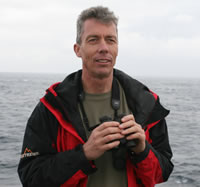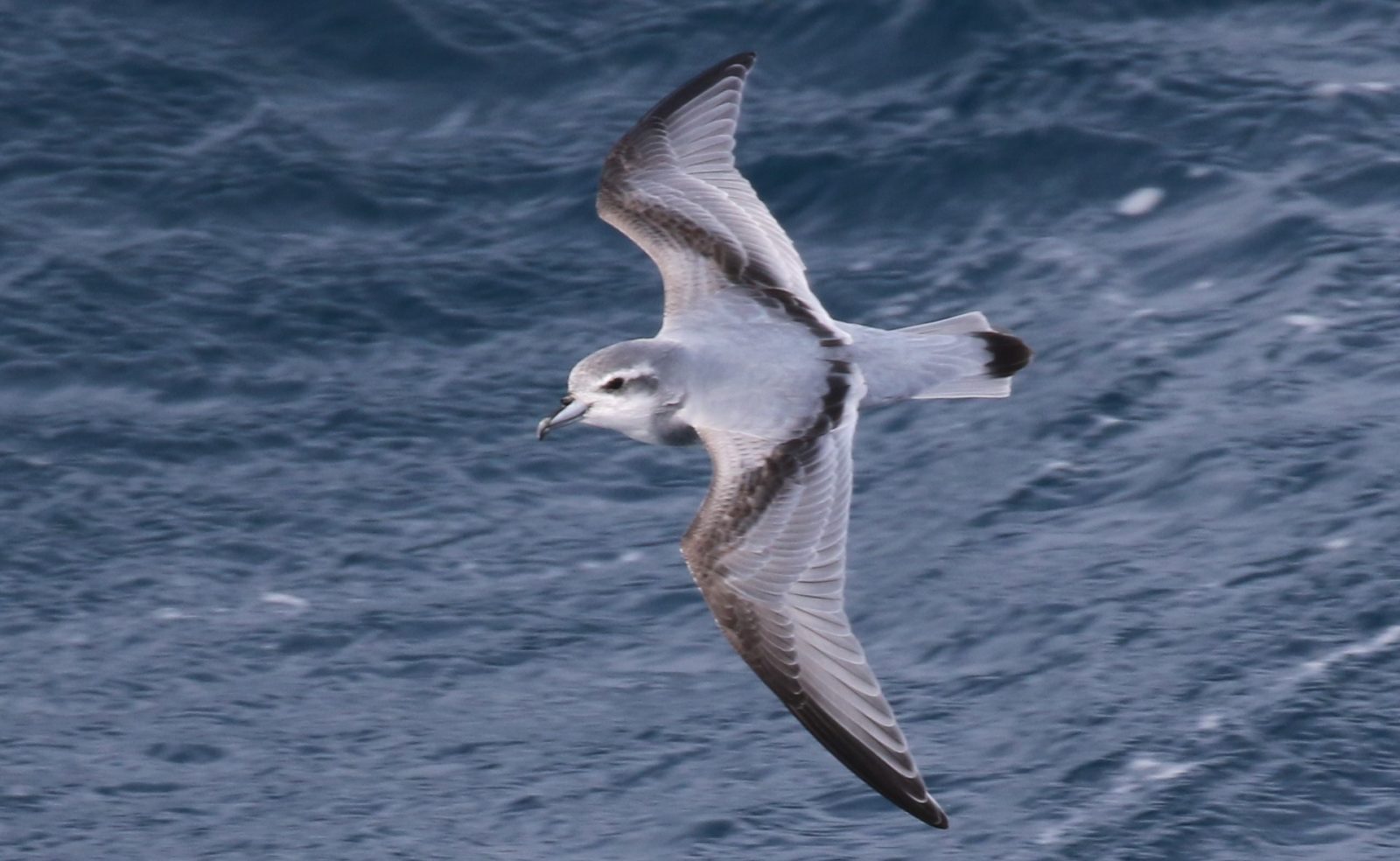 By Peter Ryan, onboard scientist, expert in general ornithology, seabird-fishery interactions, evolutionary ecology, marine debris, solid waste management, biology of oceanic islands.
By Peter Ryan, onboard scientist, expert in general ornithology, seabird-fishery interactions, evolutionary ecology, marine debris, solid waste management, biology of oceanic islands.
Leg 1, Day 15 – January 4th, 2017.
Despite initially rather murky weather, we managed 12 hours of transects during the long detour south of Kerguelen. A respectable 20 species of birds were observed, perhaps the most interesting of which was a white-phase Southern Giant Petrel; this form typically only occurs at more southerly breeding colonies (none breed at the Prince Edwards, Crozets or Kerguelen). Prions were only photographed in the mid- to late-afternoon, when Slender-billeds predominated, but Antarctics were thought to be more common in the morning.
| Antarctic Prion | 140 | Slender-billed Prion | 80 |
| Crested penguin spp. | 76 | Black-bellied Storm Petrel | 24 |
| Wilson’s Storm Petrel | 17 | Blue Petrel | 15 |
| White-chinned Petrel | 14 | Black-browed Albatross | 12 |
| Soft-plumaged Petrel | 8 | Brown Skua | 7 |
| White-headed Petrel | 7 | Wandering Albatross | 5 |
| Light-mantled Albatross | 5 | Northern Giant Petrel | 5 |
| Cape (Pintado) Petrel | 5 | Diving Petrel spp. | 5 |
| Kerguelen Petrel | 3 | Southern Royal Albatross | 2 |
| Southern Giant Petrel | 1 | Grey-backed Storm Petrel | 1 |
Once again, no cetaceans or anthropogenic litter were observed. Bull Kelps Durvillaea antarctica were encountered in similar densities to yesterday (24 plants in 291 km of transects), and were the only kelp species observed. Most supported growths of goose barnacles Lepas spp., but this proportion decreased as we passed south of Kerguelen.
